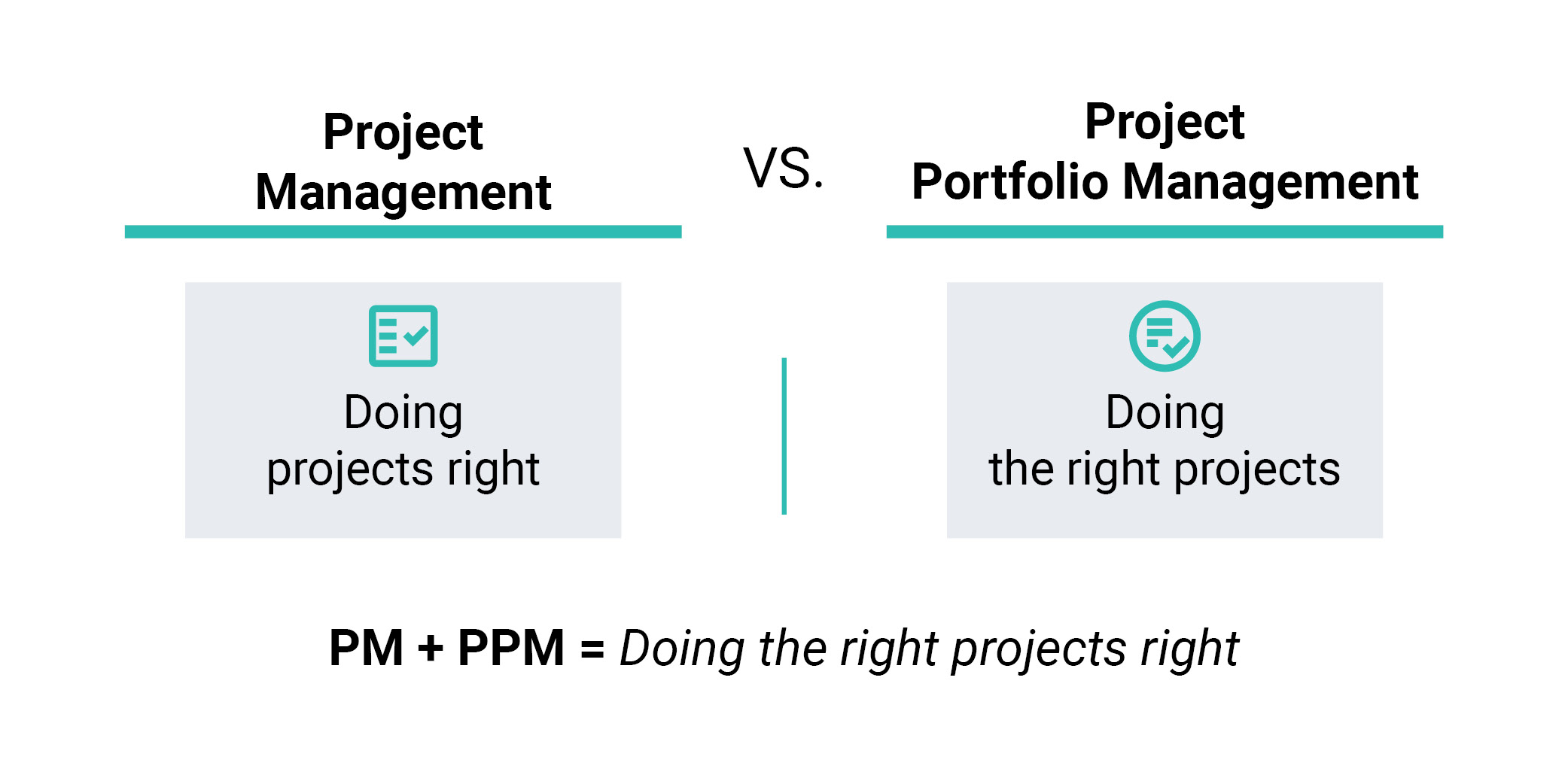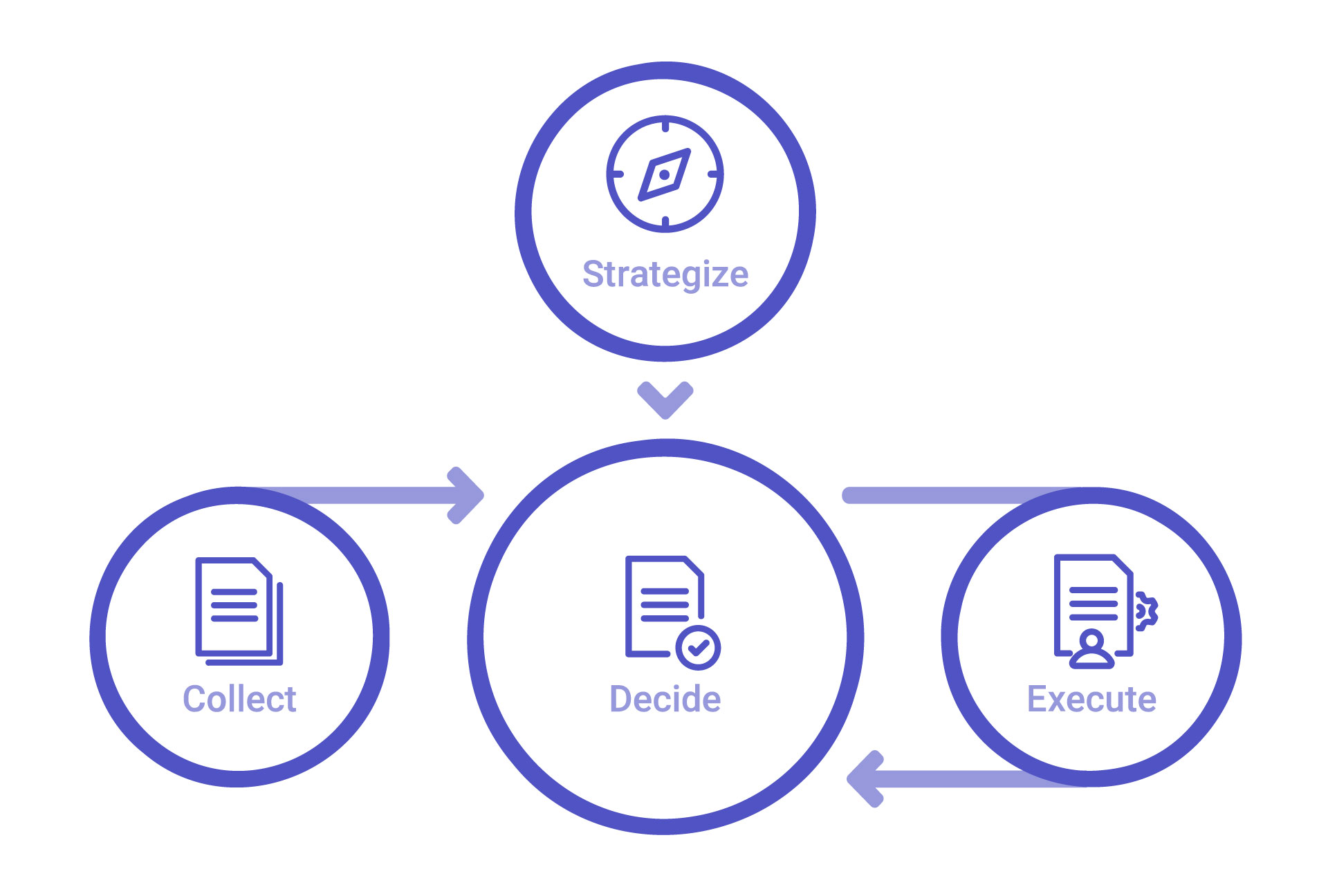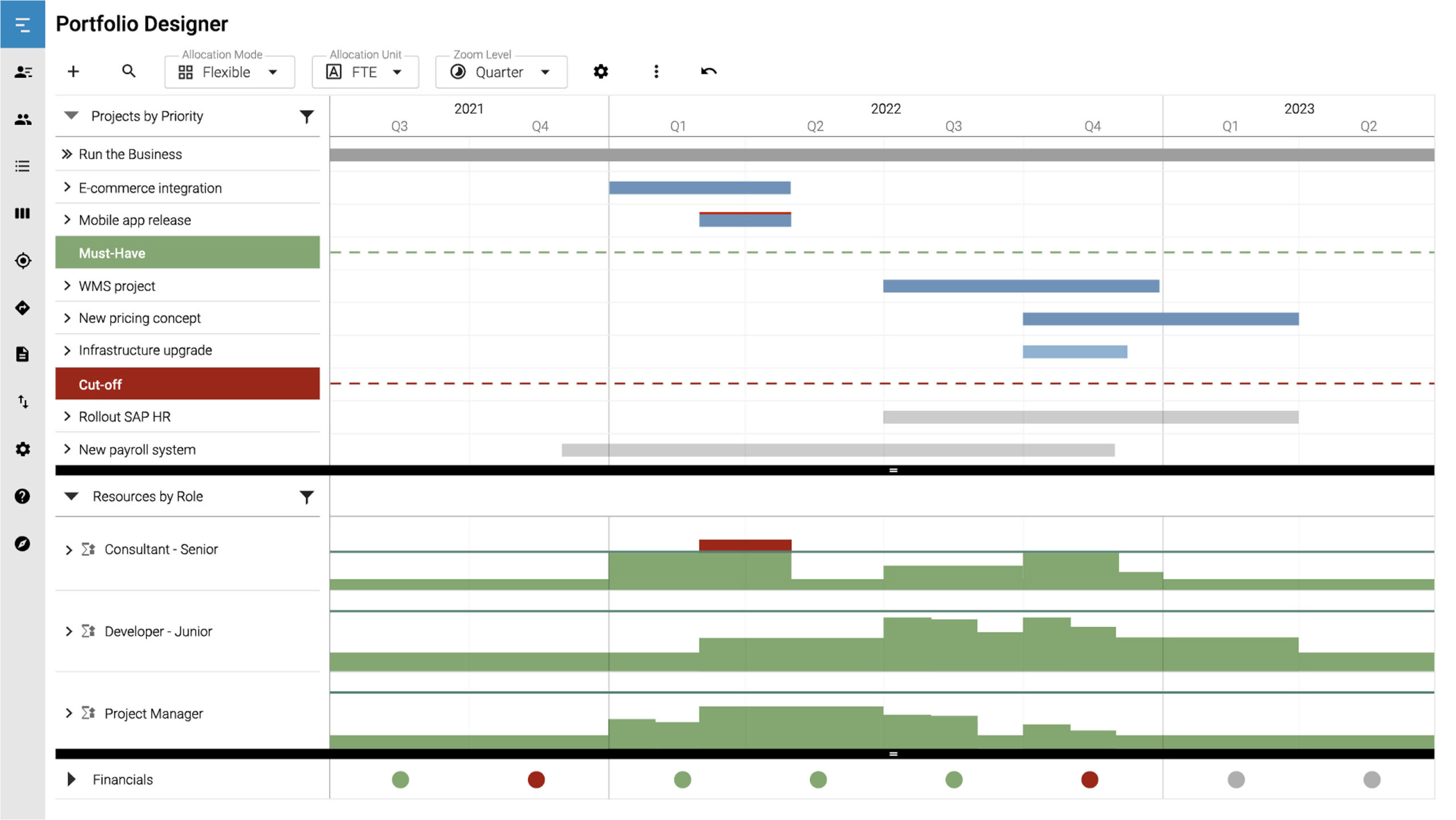What is Project Portfolio Management?
Project portfolio management (PPM) is a process that seeks to select, prioritize, monitor and analyze a company’s projects.
Project Portfolio Management:
Definition | Example | Synonyms
Project Portfolio Management (PPM) involves selecting, prioritizing, monitoring and analyzing the right projects for a company. Opportunities and risks are weighed against each other to maximize returns from the money and time invested. PPM processes provide a structure so you can focus on projects that align with your company’s goals and strategy.

A Practical Example
An example can help clarify: Anna is the head of project portfolio management at an IT company. Currently, there are several projects in the pipeline and colleagues have suggestions for future projects. Anna collects and analyzes the project proposals. She assesses whether they meet the established criteria for projects as well as the company’s strategy and goals. Based on this, she decides whether or not to implement the projects.
Anna holds regular meetings with the project managers to monitor execution and progress. During these meetings, she discusses whether teams can realistically meet their deadlines, if there are bottlenecks and how requested changes in one project might affect others in the portfolio. She regularly uses a project portfolio management tool like Meisterplan, where all stakeholders can track ongoing projects and allocated resources transparently.

Synonyms and Abbreviations
A common abbreviation for project portfolio management is PPM.
Sometimes, people may use “multi-project management” synonymously with PPM; however, multi-project management refers to the simultaneous managing of multiple projects, while PPM also considers the interdependencies between these projects and the general strategic outlook of the portfolio.
FAQ
In a classic blog post on our website, Jörg Leute explained the 4 pillars of PPM. These include:
A robust PPM Process
The details of the process will look different from organization to organization. Still, a robust PPM process will, in some manner, always include these four steps:
- Strategize by setting evaluation criteria that will contribute to your goals
- Collect project proposals for evaluation
- Decide which projects to implement
- Execute and coordinate approved projects
We recommend the Lean PPM™ Framework to make sure your process addresses all 4.

A clear organizational structure outlining jobs, roles and accountability
PPM is a continuous process with clearly defined roles and responsibilities. Many successful companies have a dedicated department, known as a Project Management Office (PMO), just to maintain and refine this process. Whether you establish a PMO or not, key roles in PPM can include the project portfolio manager, program manager, project (or product) owner and resource manager, although these may have different names at your organization.
Meetings, checkpoints, deliverables
Several meetings or checkpoints are necessary to keep all stakeholders informed about decisions and current progress. These include, for example, portfolio board meetings, pipeline review meetings and meetings for resolving bottlenecks.
You can find a detailed structure for scheduling routine PPM meetings, including who you should include in what meetings and when, here in our Lean PPM Templates.
Software to support stakeholders with data capture, simulations and progress-tracking
PPM should support all stakeholders throughout the entire process: from planning and execution to subsequent analysis. This works best with software that is easy to use and benefits all stakeholders along the entire value chain.
- PPM optimizes resource utilization. Skilled workers are always allocated to the most important projects according to their abilities — without overload or downtime.
- PPM lets all stakeholders have their say and makes sure they’re satisfied. PMO leaders, project managers, project leaders, team members and executives: they are all empowered in their roles, always up to date with new decisions and optimally utilized. This motivates and retains skilled professionals within the company.
- PPM helps you get an overview of all your company’s projects. Moreover, this overview will help you appropriately weigh the risks and rewards of each individual project. This will help you create a portfolio that balances projects based on their risk profiles.
- PPM ensures all dependencies are accounted for. With clear dependencies and a detailed roadmap, your planning helps reduce waiting times when transitioning between projects or project phases.
- PPM makes sure projects truly fit with your strategy. Projects are only approved if they align with the company’s strategy and there is sufficient budget and capacity to execute these projects.
- PPM makes your priorities clear. Management knows when high-priority projects are completed and is able to make flexible decisions and to prioritize projects.
PPM differs from multi-project management by focusing on strategic objectives and emphasizing strategic alignment. While multi-project management also involves running multiple projects simultaneously and allocating resources among them, the projects do not necessarily share a common goal or depend on each other.
Ideally, a Project Management Office (PMO) should help in implementing project portfolio management (PPM). The PMO acts as an intermediary between strategy providers and the executing departments.
When implementing PPM at your company, make sure to pay attention to the following:
- Assign roles: Appoint portfolio coordinators, project managers and resource managers.
- Schedule regular meetings: With various regular meetings, you can communicate business goals, keep all stakeholders informed, monitor the current portfolio and make decisions.
- Use Meisterplan: Our PPM tool includes all the essential features that support all stakeholders optimally, from the CEO to individual team members.
The application of project portfolio management allows your company to focus on those projects that are aligned with your corporate strategy and goals. By optimally utilizing resources, you can not only complete projects on time but also increase employee satisfaction. With a clear overview of dependencies between multiple projects, you can minimize risks and address issues accordingly.
In short, you don’t waste resources on unsuitable projects. Keep track of what’s happening in the company, and you can always react accordingly.
Project Portfolio Management with Meisterplan
With the Meisterplan PPM becomes straightforward and secure. Meisterplan helps you gain an overview of your portfolio and creates transparency: you see all projects, resources, dependencies and priorities. This benefits project managers, departments and, of course, executives.

Discover More Here!
Dive even deeper into the topics of project, portfolio and resource management: Each page offers expert knowledge, product insights and a wealth of experience we'd like to share with you.

Everything You Need to Know about Project Portfolio Management (PPM)

A Productive Start to Project Portfolio Management
